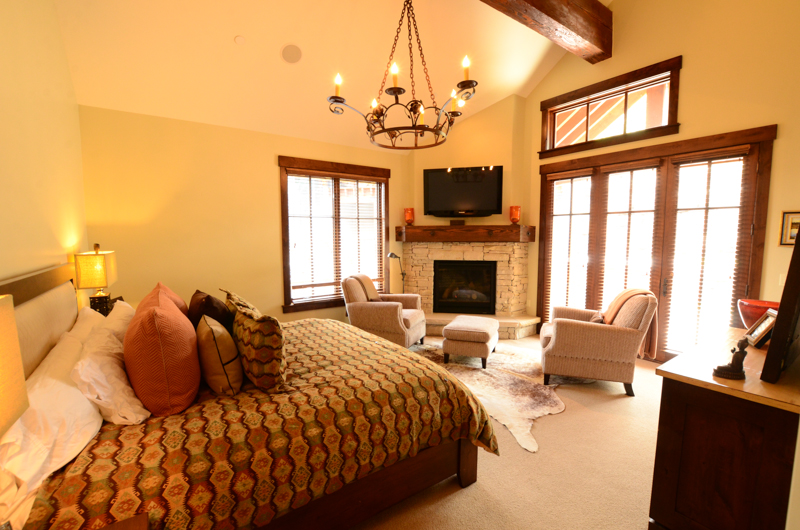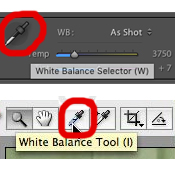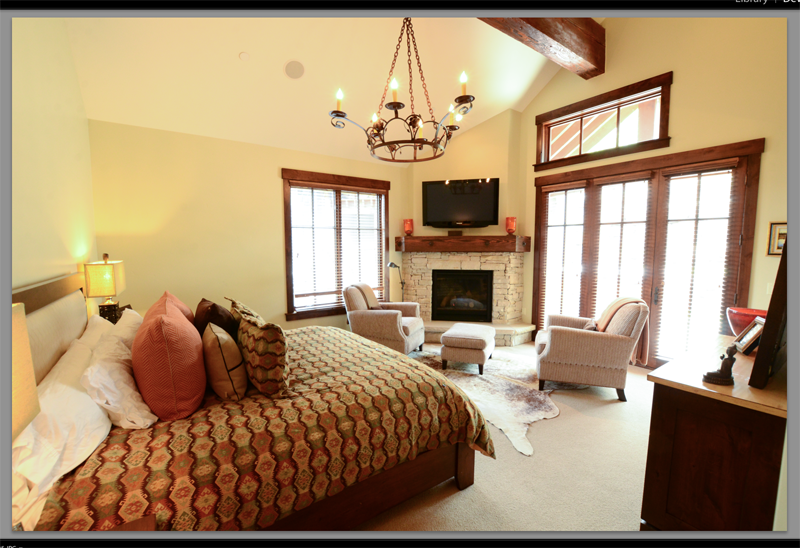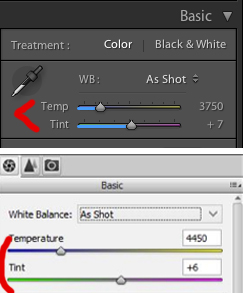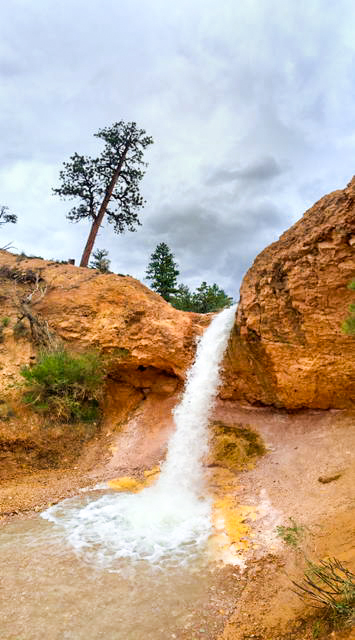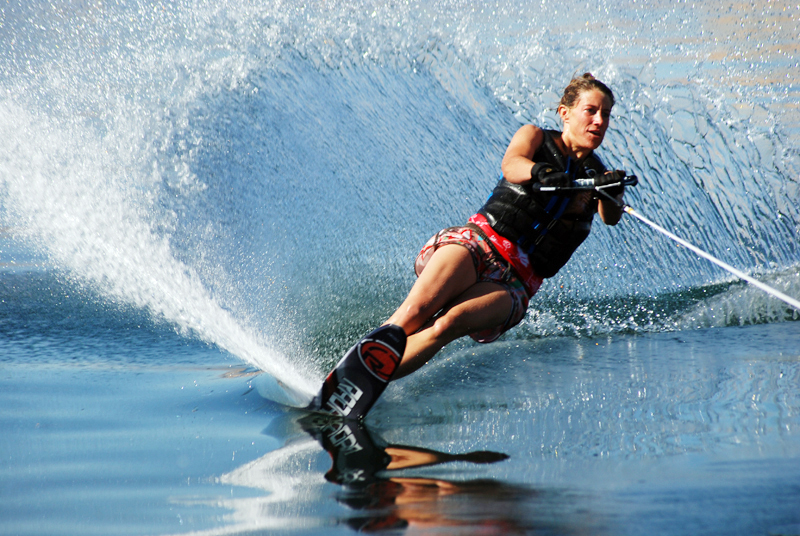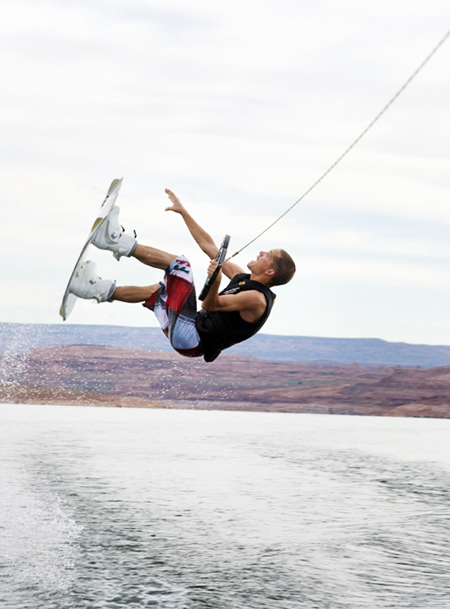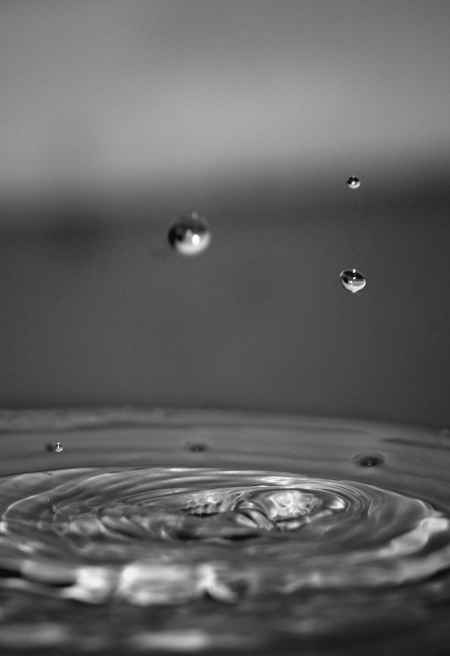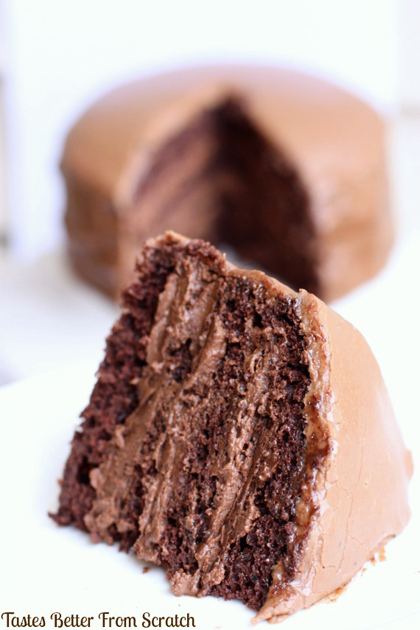How to Take a Vertical Panorama Photo on the iPhone!
Some of you might know this already but I just had a breakthrough this weekend while in some really beautiful parts of the Utah desert! I figured out that you can easily take a vertical panorama photo on the iPhone! We were at this beautiful waterfall and when we hiked below it, there was also a huge pine tree above it. I was frustrated that I couldn't get a good composition of the waterfall AND the whole tree in one shot. Here's what it looked like:
I'm pretty sure right after I took this I said out loud, "Man, I wish you could take a vertical panorama so I could get that tree in my shot".
Then you know what I did? I turned my camera to the panoramic setting, turned my phone sideways to see what would happen and GUESS WHAT! It worked! haha.
Here's my shot! It's WAY better, right? YAY!
To Take a Vertical Panorama:
Open your camera and select the panorama mode.
Turn your camera sideways.
Take the panorama as usual and press done when finished!
Sometimes I am the one learning as I go too :) Anyway, I was pretty excited about my discovery and thought I'd share the tip with you readers out there!! Take your iPhone landscapes to the next level with vertical panoramic photos.
Fourth of July Layered Drinks!
For the Holiday weekend I thought I'd do a fun patriotic recipe post! I came across these fun red, white and blue layered drinks that are so easy to make and perfect for the 4th of July.
All you have to do is get three drinks that are red, white and blue and that have different sugar contents. I chose Sobe Pina Colada, Gatorade Blue Cherry and G2 Fruit Punch.
Steps:
Pour the drink that has the highest amount of sugar into the glass of ice first, 1/3 of the way full. For mine it was the Sobe.
Pour the drink with the next highest sugar content into the glass REALLY slowly, trying to have it hit an ice cube instead of letting it hit the Pina Colada layer to avoid mixing (blue gatorade).
Follow with the red layer (or the drink with the least amount of sugar, G2) and pour to the top. Once again, go SLOW.
Viola! There you have it. I moved my straw after pouring the drink so my white layer shrunk a little, but it's still pretty sweet right? I also wondered if this kind of drink would even taste good; it might have been the hot summer day that helped but I honestly really liked it! It was delicious!
Behind the scenes: I would have preferred one of those white and blue or white and red paper striped straws, but sometimes you have to make due with what you have! We're hosting a pretty big party tonight so I didn't have the time to run around. I love photographing food & drinks can be simple - one patriotic napkin, a straw, a mason jar and a tablecloth in the background. I love my wood table top too. Play around with different angles and materials to find the shot you like best! I didn't like any of the first 10-15 shots I took. The more you shoot, the better your results will be.
My settings: 50mm lens, ISO 250, f/3.2 and 1/250 with a custom white balance setting (K5260) and window light.
Have a great weekend!!
Shutter Speed - How to Freeze Motion & Show Motion Blur
The Fourth of July is one of my favorite holidays. I am SO excited for the 4th this year! There is such a fun feeling living in a somewhat small town; I love driving with my windows down past beautiful green fields and mountain lakes, listening to all the patriotic country songs and thinking about just how LUCKY we are to live in America. I love the BBQ’s, parades, the rodeos, and the fireworks.
I thought this would be a good week to learn more about good ol’ shutter speed! If you want to photograph cowboys trying for 8 seconds at the rodeo, freeze fun moments of your kiddos splashing in water, or capture the magic of fireworks, it all comes down to shutter speed.
For those of you wanting to learn how to freeze motion or show motion blur, this is an easy tutorial to help you get the perfect shot at the perfect moment.
How to Freeze Motion
To freeze motion in a photograph, you need to use a FAST shutter speed. Shutter speed gets quicker the higher the fraction is. Going from 1/60 to 1/250 to 1/500th of a second means your shutter speed is quicker. If you want to be sure that you freeze a subject running or jumping, using a shutter speed of somewhere between 1/500 - 1/1000th of a second is a good idea.
I love freezing motion at one of my favorite places on earth, Lake Powell. We spent many 4th of July's on that lake! It's a lot of fun to get good action shots of water sports. For the skier, I shot at 1/750, f/6.7 and my ISO was 110.
For the wakeboard shot, my settings were 1/500, f/8 and ISO 100.
Wait a sec! That high of a shutter speed could be a problem right? Using a shutter speed that high means that you need A LOT of light. This can easily be done mid-day with the sun shining outside. If your lighting conditions aren’t bright enough, you’ll have to raise your ISO to a high ISO #, or open your aperture up as far is it can go (lower f/stop #). These are two keys to getting more light. Keep in mind that a lower f/stop will limit what is in focus and give you more background blur.
Are you bugged or overwhelmed by more manual settings talk? It's okay! I get it. Here’s another solution: change your camera settings to shoot in shutter priority. That way you can pick your shutter speed, and your camera will help you out with the rest. Phew. It's that easy!
I shot this photo below at 1/1250 of a second and it's still not tack sharp! It's a fun shot but sometimes it's a lot of trial and error until you get the perfect shutter speed.
Here's another fun photo of freezing water in motion, taken at 1/600.
How to Blur Motion
Blurring motion is the exact opposite idea. To show movement or motion blur, you’ll need a longer shutter speed. This will be a slower amount of time, such as keeping your shutter open for 1/4th of second, to perhaps three minutes or even longer. Your camera records what it sees in that amount of time, thus showing any movement.
For this image below, these were my settings: 1/40, f/22, ISO 400. Because the ride was moving fast enough, 1/40 of a second was just long enough of a shutter speed to show the movement. Had I changed it to three seconds or longer, the shapes of the seats and the people would be a complete abstract blur. I chose this shutter speed because I wanted it to still be recognizable.
First, you have to think about how fast your subject is moving. Second, think about how much light is in your scene. If you have a long shutter speed on a bright sunny day, your image will easily be overexposed (SUPER bright). If you only use a somewhat longer shutter speed at night (like 1/15th of second) you may not have enough light in your scene and it could be underexposed or DARK.
If you try to show motion blur but your image is too bright, change your ISO to a LOWER # (less light) and your aperture to a HIGHER f/stop # (less light will enter your camera). If that’s too complicated to balance, once again switch to your SHUTTER PRIORITY and pick the longer shutter speed that you’d like to try out.
Two ways of blurring motion are:
1. Keeping your camera totally still and having your subject move.
2. Moving your camera (also can refer to the term panning, which is a fun trick we'll talk about later)!
To show your subject moving, it’s a great idea to use a tripod to ensure that you won’t shake your camera while taking the shot with a longer shutter speed. If you hand-hold your camera and try taking a two-second exposure, your photo will show camera shake from your hands moving. If you don’t have a tripod, you can try setting your camera on a table or anything stationary, set a self-timer and release the shutter. Even the motion of pressing your shutter release button can cause camera shake!
I didn't have a tripod for this photo and you can see that his figure is a little fuzzy and blurry. It would have been much better result if I had a tripod.
I shot this photo below at 1/10th of a second, f/4.8 and ISO 320.
Using a tripod and a long shutter speed, you can get some fun images with sparklers by light painting; simply waving your hand around while the camera is taking the photo.
For the shot below, I captured the movement of car lights by shooting at 1/10, f/3.5 and ISO 100 and of course, used a tripod so the rest of my image was clear.
Use this holiday weekend to play around with your shutter speed and see what interesting images you can create! Be creative, have a tripod handy, remember SHUTTER PRIORITY and have fun!
Feature Friday - Tastes Better From Scratch
Hey readers! I'm Lauren, the recipe creator and photographer behind the food blog Tastes Better From Scratch. I'm also proud to say I'm Alise's sister-in-law, and I'm excited she is letting me take over her amazing blog today!
I've always loved sharing and creating recipes with real ingredients, which led to the start of my blog. I am obviously a true believer that everything Tastes Better From Scratch! And not only does it taste better, it’s usually better for you, and less expensive! My blog is all about sharing easy, homemade meal ideas and recipes that the whole family will love!
Q: How do you balance preparing food for your family AND photographing food for your blog? What advice do you have for making this a smooth process?
I usually try and prepare dinner as much ahead of time as I can. If I can make it in the morning, that is ideal. That way I can take some simple photos of the food using good natural window light, and it makes my evening much less stressful when dinner is nearly ready! If I'm not able to prepare the entire meal ahead of time, I do what I can to make dinner go smoothly, like chopping vegetables and making sauces or dressings ahead of time. I am a planner when it comes to meals--that's what inspired the Weekly Meal Plans I share with my readers that include a free printable shopping list. The more organized you are, the more time you have to spend with your family!
Lauren's Food Photography Tips:
Know your camera settings: The biggest challenge for me when I first started my blog was making my food look good, through photography. I had an SLR camera but had no idea what I was doing. Lucky for me I've always had Alise around to give me tips and tricks to improve my photos. Several years ago she drew a little photography cheat sheet for me that has been a complete lifesaver and I was so excited to see her share the printable version of it here on her blog.
Good Lighting: Whether you have a professional camera or just use the camera on your phone, I would argue that good lighting is the most important element in taking good photos. Try to find good natural lighting streaming in through windows in your house. And keep in mind that the best lighting may not be in your kitchen or even in your living room.
Food Styling: My food photography style is pretty simple. I don't use a lot of props and most of my photos are close-ups of nothing but the food on the plate. Food Styling is something I've had to learn with practice. I try to think ahead about what my end dish will look like and what simple ingredients from the dish I could use as garnish to add a pop of color or an element of interest.
Some of my most popular recipes:
Apple Crisp
Grilled Hawaiian Chicken Teriyaki Bowls
Chocolate Mousse Cake
Creamy Lemon Chicken Piccata
Reese's Peanut Butter Cupcakes
Cajun Chicken Alfredo Pasta
Mississippi Mud Cake


